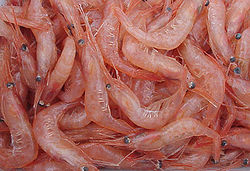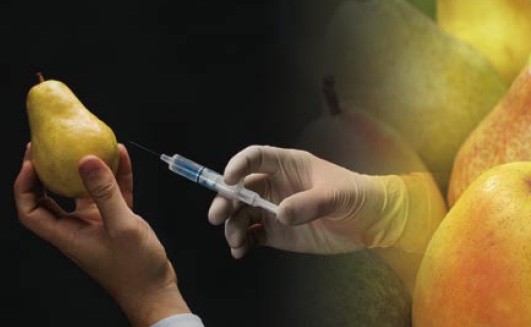Talking about agroindustry in present days, we also talking about agriculture it self. Agriculture and farming activity is start almost a thousand years ago. Pinpointing the absolute beginnings of agriculture is problematic because the transition away from purely hunter-gatherer societies, in some areas, began many thousands of years before the invention of writing. Nonetheless, Archaeobotanists/Paleoethnobotanists have traced the selection and cultivation of specific food plant characteristics, such as a semi-tough rachis and larger seeds, to just after the Younger Dryas (about 9,500 BC) in the early Holocene in the Levant region of the Fertile Crescent.
Limited anthropological and archaeological evidence both indicate a grain-grinding culture farming along the Nile in the 10th millennium BC using the world's earliest known type of sickle blades. There is even earlier evidence for conscious cultivation and seasonal harvest: grains of rye with domestic traits have been recovered from Epi-Palaeolithic (10,000+ BC) contexts at Abu Hureyra in Syria, but this appears to be a localised phenomenon resulting from cultivation of stands of wild rye, rather than a definitive step towards domestication. By 8000 BC, farming was in practice in Anatolia.
By 7000 BC it reached Mesopotamia, by 6000 BC the Nile River, and by 5000 BC, it had spread to India. Around the same time, agriculture was developed independently in China. Maize was first domesticated from teosinte in the Americas around 3000-2700 BC. In these contexts lie the origins of the eight so-called founder crops of agriculture: first emmer and einkorn wheat, then hulled barley, peas, lentils, bitter vetch, chick peas and flax. These eight crops occur more or less simultaneously on PPNB sites in this region, although the consensus is that wheat was the first to be sown and harvested on a significant scale.
There are many sites that date to between ca. 8,500 BC and 7,500 BC where the systematic farming of these crops contributed the major part of the inhabitants' diet. From the Fertile Crescent agriculture spread eastwards to Central Asia and westwards into Cyprus, Anatolia and, by 7,000 BC, Greece. Farming, principally of emmer and einkorn, reached northwestern Europe via southeastern and central Europe by ca. 4,800 BC (see, among others, Price, D. [ed.] 2000. Europe's First Farmers. Cambridge University Press; Harris, D. [ed.] 1996 The Origins and Spread of Agriculture in Eurasia. UCL Press).
The reasons for the earliest introduction of farming may have included climate change, but possibly there were also social reasons (e.g. accumulation of food surplus for competitive gift-giving). Most certainly there was a gradual transition from hunter-gatherer to agricultural economies after a lengthy period when some crops were deliberately planted and other foods were gathered from the wild. Although localised climate change is the favoured explanation for the origins of agriculture in the Levant, the fact that farming was 'invented' at least three times, possibly more, suggests that social reasons may have been instrumental.
Full dependency on domestic crops and animals did not occur until the Bronze Age, by which time wild resources contributed a nutritionally insignificant component to the diet. If the operative definition of agriculture includes large scale intensive cultivation of land, mono-cropping, organized irrigation, and use of a specialized labour force, the title "inventors of agriculture" would fall to the Sumerians, starting ca. 5,500 BC. Intensive farming allows a much greater density of population than can be supported by hunting and gathering and allows for the accumulation of excess product to keep for winter use or to sell for profit. The ability of farmers to feed large numbers of people whose activities have nothing to do with material production was the crucial factor in the rise of standing armies. The agriculturalism of the Sumerians allowed them to embark on an unprecedented territorial expansion, making them the first empire builders. Not long after, the Egyptians, powered by effective farming of the Nile valley, achieved a population density from which enough warriors could be drawn for a territorial expansion more than tripling the Sumerian empire in area.
Agriculture in the Middle Ages
The Middle Ages owe much of its development to the advances made by the Muslims. As early as the ninth century, a modern agricultural system became central to economic life and organization in the Muslim land. The great cities of the Near East, North Africa and Spain, Artz explains, were supported by an elaborate agricultural system that included extensive irrigation and an expert knowledge of the most advanced agricultural methods in the world. The Muslims introduced of what was to become an agricultural revolution based on four key areas:
• Development of a sophisticated system of Irrigation using machines such as Norias, newly invented water raising machines, dams and reservoirs. With such technology they managed to greatly expand the exploitable land area.
• The adoption of a scientific approach to farming enabled them to improve farming techniques derived from the collection and collation of relevant information throughout the whole of the known world. Farming manuals were produced in every corner of the Muslim world detailing where, when and how to plant and grow various crops. Advanced scientific techniques allowed people like Ibn al-Baytar to challenge the elements by growing plants, thousands of miles from their origins that could never have been imagined to grow in a semi-arid or arid climate. The introduction and acclimatization of new crops and breeds and strains of livestock into areas where they were previously unknown.
• Incentives based on new approach to land ownership and labourers' rights, combining the recognition of private ownership and the rewarding of cultivators with a harvest share commensurate with their efforts.
• The introduction of new and a variety of crops transforming private farming into a new global industry exported everywhere including Europe. Spain received (apart from a legendary high culture), and what she in turn transmitted to most Europe, all manner of agricultural and fruit-growing processes, together with a vast number of new plants, fruit and vegetables that we all now take for granted. These new crops included sugar cane, rice, citrus fruit, apricots, cotton, artichokes, aubergines, saffron... Others, previously known, were developed further. Muslims also brought to that country lemons, oranges, cotton, almonds, figs and sub-tropical crops such as bananas and sugar cane were grown on the coastal parts of the country, many to be taken later to the Spanish colonies in the Americas. Also owing to the Muslim influence, a silk industry flourished, flax was cultivated and linen exported, and esparto grass, which grew wild in the more arid parts, was collected and turned into various types of articles.
Late Middle Ages
The invention of a three field system of crop rotation during the Middle Ages vastly improved agricultural efficiency. After 1492 the world's agricultural patterns were shuffled in the widespread exchange of plants and animals known as the Columbian Exchange. Crops and animals that were previously only known in the Old World were now transplanted to the New and vice versa. Perhaps most notably, the tomato became a favorite in European cuisine, with maize and the potato widely grown, while certain wheat strains quickly took to western hemisphere soils and became a dietary staple even for native North, Central and South Americans.
By the early 1800s agricultural practices, particularly careful selection of hardy strains and cultivars, had so improved that yield per land unit was many times that seen in the Middle Ages and before, especially in the largely virgin lands of North and South America. With the rapid rise of mechanization in the 20th century, especially in the form of the tractor, the demanding tasks of sowing, harvesting and threshing could be performed with a speed and on a scale barely imaginable before. These advances have led to efficiencies enabling certain modern farms in the United States, Argentina, Israel, Germany and a few other nations to output volumes of high quality produce per land unit at what may be the practical limit.
















